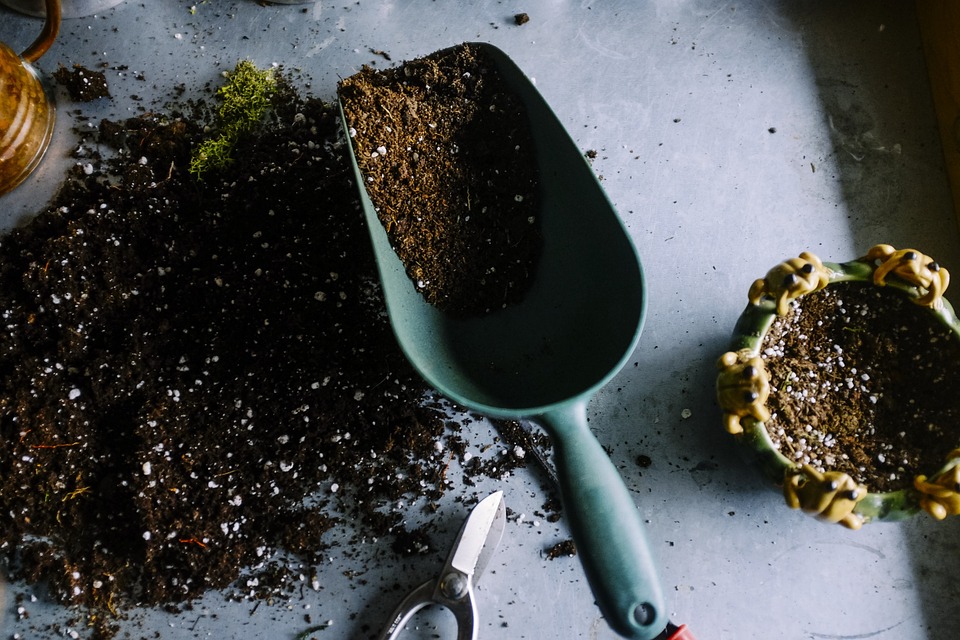Image via pixabay.com
Types of Soil
Image via pixabay.com
Understanding the different types of soil is essential for any gardener, no matter the scale. There are usually four types of soil. Before you dig around your backyard or somewhere on your farm, know the basics of the types of soil. They include sandy, silty, clay, and peaty (usually referred to as peat moss) soils. Every area you may check can usually have a combination of these garden soils. Some will be more prolific than others, depending on the area you live in. Coastal areas are more sand and silty. As you go to the center of the United States, you will find more clay and peaty kinds of soil.
You want to read up on the plants you plan on having in your garden. Be sure to find out which grows best in the soil you have. Many times you, will have to add soil you purchase from a hardware store or local farm store. Usually, the four different soil types combined work well, but if you have too much clay, it will be harder to germinate plants from seeds. Clay is solid, and water and air are harder to get through. Having sandy or silty soil is better, but without the combination of peat moss or clay, your soil will not hold together well. You want air and water to go through it more evenly providing for a healthier soil.
Sandy Garden Soil
Silty Garden Soil
Clay Garden Soil
Peaty Soil Or Peat Moss Garden Soil
Common Soil Contents
Image via pixabay.com
Gardening soil can be made up of several elements. Soil contains water, decayed plants, air, minerals, and organic matter. The more organic matter you have, the more your soil health improves. All organic matter is essential for what the soil does to your plants. Healthy soils allow air and water into them. This is also essential and makes it a pleasant environment for organisms that live in the soil and the plants you want to grow in it.
What Makes Up Soil?
Soil is made up of several different components:
Health of Garden Soil
If you need to improve the soil health, it is fairly simple. Make sure you have tools that can till the soil and move it around as much as possible. This will allow you to have different plants in your garden each year. By tilling the soil, you will be able to rotate vegetables and have a variety of different herbs and vegetables in your garden. Additionally, by covering soil areas that are more difficult to use, this can help improve the quality of the soil.
Interesting Gardening Soil Facts
Image via pixabay.com
There are several healthy soil facts that you might not know can be beneficial or interesting to you. It can take 2,000 years for natural processes to make 10 centimeters of fertile soil from rock. When you keep soil covered, it helps the microorganisms and nutrients make the soil healthier. Areas that have fences around rows of crops or around your garden can help soil become healthier. Different organic matter at high levels help keep water while also improving soil health. Garden soil around different tree species can also allow for healthier garden soil.
Other Facts About Soil
Image via pixabay.com
There are other facts about soil that you'll want to know before using it:
Preferred pH for Gardening
Image via pixabay.com
The pH level for your gardening soil is very important. All plants have different needs and levels of acidity that help them grow best. You want to look at a soil pH chart so you can understand what the different plants will need. This way, you are able to fix the pH level accordingly for each type of plant and herb you will grow. The pH level of 6.5 is usually right for most home gardens to flourish. Check if your vegetable is more exotic or something out of the norm compared to what you’re used to growling. The pH of a garden determines whether your garden will succeed each year. Knowing the pH of your soil and your soil components are essential for the development of the crops you choose. There are several plants that enjoy an acidic environment, but some cannot flourish in the slightest with higher pH levels.
Conclusion
Image via pixabay.com
Garden soil typically comes in a variety of forms, and some are better to use than others. All soil contains a few of nature’s elements, including water, air, some organic matter, rocks, and other materials. Most areas that you plan on gardening are a mixture of all four kinds of soil. It is best to have a mixture, as each one provides a better element than the others. Heavy silt areas or sand can be beneficial for some plants, but most everyday gardens do well with a mixture of clay and peaty areas. They have better elements that retain heat and moisture that are essential for gardening. Always understand the pH levels in the soil you’re using to plant. There are charts you can buy to better figure out what plants do best in certain levels of pH. You don’t want accidentally kill off plants if they can’t thrive in the level that’s in your particular soil.







Leave a Reply